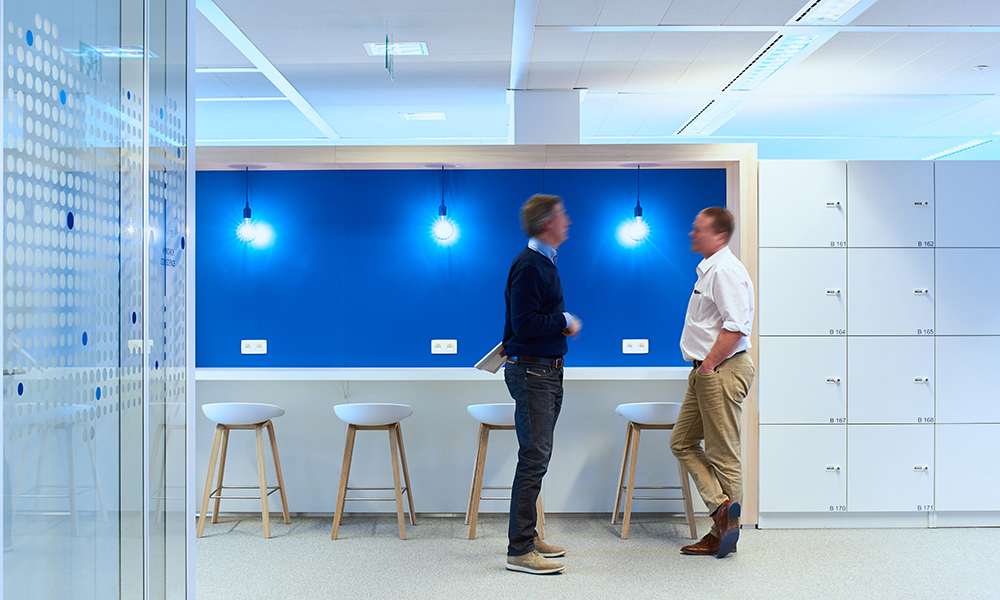
How do you get four generations in the office to work together efficiently?
24/08/2022
Generation Z has been entering the labour market as from 2016. Since baby boomers are not ready to retire just yet, odds are that you as an employer face the challenge of forging a collaboration between four generations. Generation X, Y, Z and baby boomers. Four generations, each with their own culture, standards, values and ways of working. How to go about it? We spoke to three experts to shine a light on the matter.
Getting different generations to collaborate
Businesswoman Saskia van Uffelen has worked in the IT and telco sector for over 25 years. In charge of an IT team, she too faced the challenge of getting different generations to work together. For the company to grow, she had to implement new technologies and attract new people. How could she retain her more senior colleagues while adding young people to the team?
Saskia van Uffelen champions a new way of working where the qualities of all four active generations are fostered. This demands a well-considered approach and the realisation that understanding must come from both sides. This creates peace of mind and a healthy basis for collaboration. If diversity and inclusion aren’t managed, the power structures in your organisation will prevail. The battle between generations will shift to a battle between the strong and the weak. Overachievers will assert themselves and prestige and power will dominate. As a result, creativity and innovation are stifled.
Change of power
The youngsters of generation Z are storming the labour market, but companies tend to linger in an old leadership culture. Meanwhile, the world is transforming at lightning speed and qualified employees are very hard to come by. The result is a war on talent. If companies try to approach the new generation(s) in the same way as they would approach baby boomers, they will fail. Principles have changed and so has the preferred way of working.
Herman Konings is a change psychologist and trend analyst. He notes that baby boomers still represent a significant part of the labour force at the moment. They will be retiring within the next decade. And yet, they are still in charge of decision-making and policy formulation. What stands out to him is that these leaders are being replaced by leaders from generation Y rather than generation X. A seemingly counter-intuitive development caused by the fact that employers view millennials as connected natives. They have more to offer, collaborate well and have no issues switching between the digital and the analogue. Something to be mindful of, as this is a potential source of tension between generation X and Y.
A lot in common as well
Still, employees from different generations who do the same work still have plenty in common. Such as shared interests and drives. According to Yvonne van Sark, young people are getting along quite well with the older generations these days. She has been writing and advising about young people as a target group for over 25 years and notes that the younger generation tends to wait longer before leaving the nest. Plus, the struggle for being heard isn’t as fierce as it used to be due to improved attention to the voices and wishes of the younger generation. She notes that if an organisation has a good age distribution among its employees, collaboration fares well.
Yvonne van Sark notes that if an organisation has a balanced age distribution, collaboration tends to fare well. And it can be stimulated for each generation. By establishing a young professionals' team, for example, that allows them to get to know each other informally. Research also shows that young people prefer to work in mixed teams with people of various ages. This kind of team offers young people everything they need: colleagues with experience and deep knowledge to learn from and like-minded young people who remind them of themselves.
Respect and equality
As an employer, create a shared and safe space where fresh and perhaps naive ideas can be shared without being judged right away. Young people tend to come up with different kinds of ideas and have an uninhibited perspective on things. They are more open to digitisation and learn on the job. Few things demotivate them more than being told that ‘this is how we’ve done it for years’ all the time.
Good collaboration between generations emerges from mutual respect and equality. Senior colleagues can offer support based on their experience but that will only work if they treat their younger counterparts as their equals and with respect. Young people may still need to learn the ropes, but they need the space to be able to do that. A safe space.
Good collaboration and mutual understanding between generations is more important than ever before. It is the best way to create a liveable world for the generations ahead. As workspace designers, we are happy to help you navigate this with our solutions and partners. Do you want to join forces to build that bridge between generations at your workplace? Contact us today for more information or an informal introductory chat.
Source: Psychologies.be
Generations? A quick refresher. Below, a common categorisation:
- Baby-boomers: born 1945 - 1960 (currently between 62 and 77 years old)
- Generation X: born 1961 - 1980 (currently between 42 and 61 years old)
- Generation Y (also known as Millennials): born 1981 - 1995 (currently between 27 and 41 years old)
- Generation Z: born 1996 - 2010 (also known as Zoomers) (currently between 12 and 26 years old)





